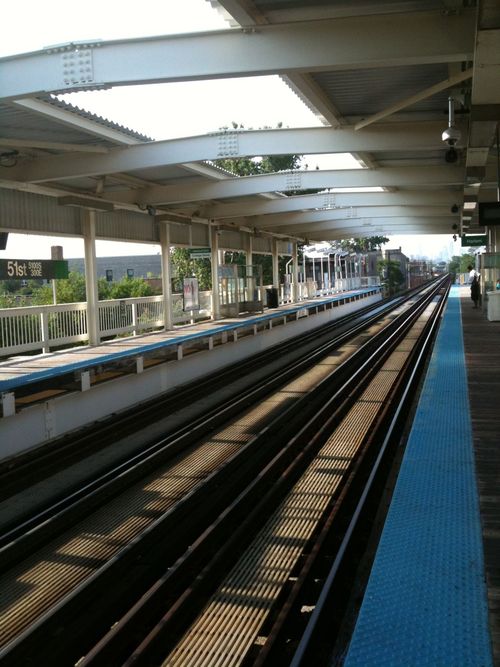(Note: As of August 10th, this post can also be accessed on AVID’s blog, Adventures in College & Career Readiness.)
From the moment I walked in the door, I knew that I didn’t belong.
On a recent trip to Chicago, that thought invaded my mind as I walked onto the L’s Green Line, headed to the South Side from the Clark/Lake connector. Sitting in one of the train car’s few empty seats that afternoon, I found myself submerged in a culture in which I felt like an outsider. This feeling is a relative rarity for me: as a middle-class, 30-something white male, I do not enter into too many situations in which I ever have to think about myself in the minority. Even throughout my week’s stay in the city, riding all forms of public transit as a participant in a conference comprised of over 2,000 educators like myself, I usually found it easy to connect and feel at ease with those around me.
But somehow, not here.
Looking around me, the rational side of my brain recognized no need to be alarmed. A small group of teenage boys discussed difficulties with some of their friends while heading to a party. Two twenty-somethings lost themselves in their iPods after a workout at the gym. Other individuals sat to themselves, several with bags of groceries after a trip to the store. One kid tried to pick up a couple of girls, and seemed to be having success until the girls realized that they knew of this young man’s reputation. (He walked away sheepishly.) Passengers entered, passengers left, each on their own path to some intended destination, much like me.
The emotional side of my mind, however, could not shake the fact that I was an outsider. While I did not live in the area (nothing different from anywhere else that week), no one else who looked like me did, either. I didn’t know any of the colloquialisms passed back and forth. I didn’t match the dress, the language, the culture. The fact that I was the only white guy in what seemed like a 10-mile radius only made it clearer that I stuck out in this situation. And while I recognized the irrationality of my discomfort, I could not stop it from springing into my mind.
It was that moment that I recognized the irony of my fixation on my “minority” status. How many of our students feel the exact same sense of disconnection when it comes to being immersed in a college-bound culture?
I was in Chicago to participate in an AVID Summer Institute, an annual series of professional development opportunities offered to those divisions implementing the AVID program within their schools. AVID– an acronym for “Advancement Via Individual Determination”- takes on the mission of closing the Achievement Gap “by preparing all students for college readiness and success in a global society.” This program targets students in the academic middle who desire to go to college. Many enrolled are members of a minority group, and most would be the first in their families to attend college. To accomplish this feat, students enrolled in AVID take on the most rigorous courses offered in their school, utilizing the AVID support network of classmates, teachers, parents, and tutors to foster a sense of belonging.
While the note-taking strategies, study skills and critical thinking practice that make up the majority of the AVID curriculum play a large part in preparing these students to succeed, I believe it is the social network built by those students enrolled in AVID that is the biggest benefit of the program. Often, these students would already be taking and succeeding in these high-level courses, if only they saw themselves as one who belonged in the room. Students in most schools’ college-bound track are a tightly knit group, with a network forged sometimes as early as 6th grade. Joining such a group as an “outsider” can be an emotionally taxing process. While a student might try to focus on learning the material of the course, they may instead find themselves listening to the emotional side of their brain that sides with the role of outsider. By being part of the school’s AVID network, these students now have a cohort of classmates with whom they build this sense of belonging, united by an expectation for academic success. Consequently, the positive support network of peers helps each individual feel like one who belongs in the room.
During the conference’s keynote luncheon speech, AVID Executive Director Jim Nelson followed up testimonials by two students in Chicago’s AVID program with words that have stuck with me: “What these students have done is exceptional. We must ensure, however, that they are not exceptions.” As we move toward a new school year, I ask you: how will you ensure that the students in your classroom feel that they can succeed? What will you do to help our students to see themselves as exceptional young men and women? How will we help all of our students feel that they do belong? Without that sense of belonging, I fear that our students “in the middle” will not rise to the top, paralyzed instead by that nagging desire to get away from the discomfort of their surroundings as quickly as possible.
